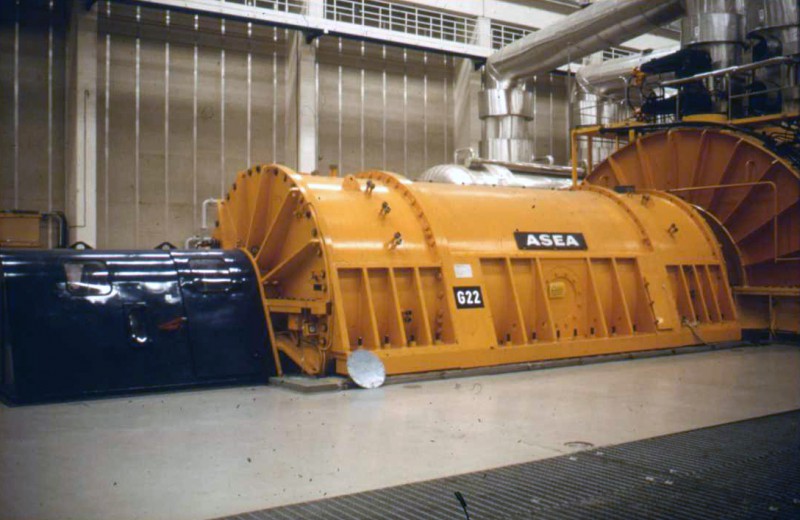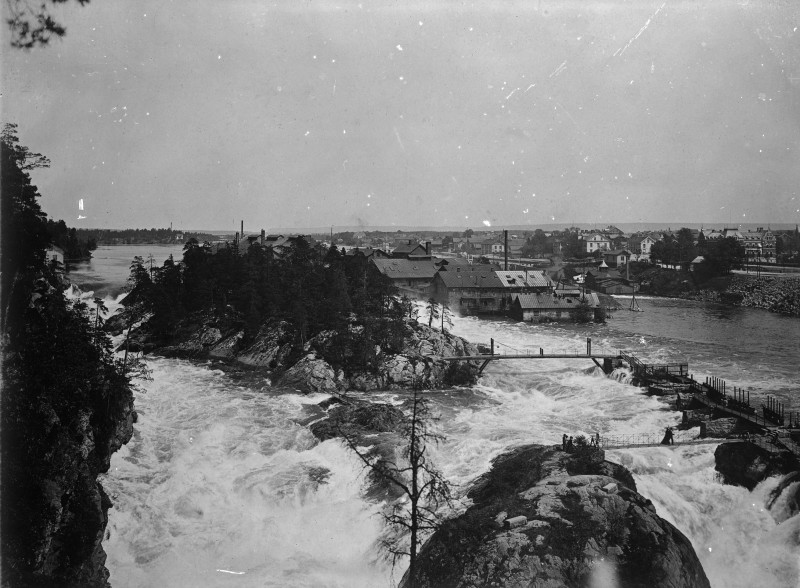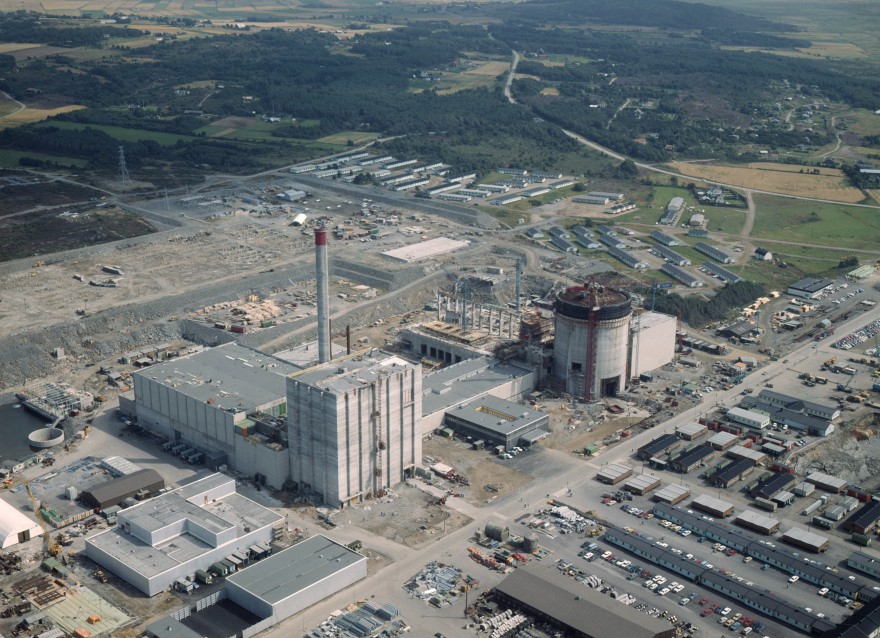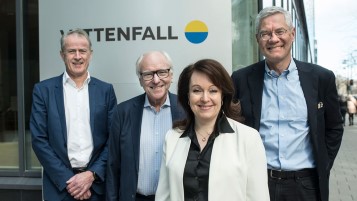
A tool for the government
Since the start, Vattenfall has been a tool in the hands of its owner, the Swedish state: initially to promote the country's industrialisation, later as an element of industrial policy. Since the 1970s, Vattenfall has, to a varying extent, played an important role in the country's energy policy.
Under the leadership of Vilhelm Hansen, the first Director General, Vattenfall's focus changed. In 1905, when Vattenfall was still the Trollhätte Canal and Waterworks, its task was to exploit the Trollhätte falls for electricity production and to renovate the canal. This was a success, so in 1911 Vattenfall's instructions were changed. By that time, the state was no longer leasing water rights to other operators, as was originally intended. According to the minister in charge, Vattenfall was instructed to 'be responsible for use of the state's hydroelectric assets'. The aim was to aid in industrialisation of Sweden.

Trollhättan power plant. The Trollhättan falls seen from Oscar's bridge before the construction of the power plant. Year: 1900 | Place: Trollhättan | Creator: Okänd | ID: VF000146
Once the three pioneer plants were in operation in 1915, Vattenfall increased its ambitions. Not only the assets already owned by the state were to be used. With the consent of the government, Vattenfall also acquired a number of water rights in central Norrland between 1917 and 1920. This new strategic direction was vital for the future. These acquisitions laid the basis for Vattenfall's expansive development of power that began in the late 1930s.
During the 1950s, the government wanted to develop a Swedish atomic power program. This would be done according to 'the Swedish line', using heavy water and natural uranium for energy production. Responsibility for this lay with the Ministry of Trade, which managed technical development through the partially state-owned AB Atomenergi. Vattenfall, on the other hand, came under the auspices of the Ministry of Communications. When Vattenfall also wanted to invest in atomic, or nuclear, power, these plans clashed with those of the Ministry of Trade and AB Atomenergi. Vattenfall had to give way. The company had tried to become a part of energy policy, but failed.

Ringhals turbine, supplied by Asea. Year: 1971 | Place: Ringhals | Creator: Okänd | ID: VF000149
Vattenfall also got to experience political games in the expansion of nuclear power in the late 1960s. It wanted to order a reactor for Ringhals from Westinghouse. But this was not in accordance with state industrial policy. The government wanted to merge AB Atomenergi with Asea's nuclear department to create the semi-state-owned company Asea-Atom. The problem was that Asea was not especially interested in such a merger, so the government sweetened the offer with a reactor order. The result was that two reactors were ordered in parallel for Ringhals – one from Westinghouse and one from Asea-Atom. Even during the oil crisis in 1973, the government exploited Vattenfall's resources in industrial policy. For instance, Vattenfall was instructed together with the Swedish state-owned mining company LKAB to form Svenska Petroleum AB. This company was to conduct long-term oil procurement. As coal could be an alternative to oil, Vattenfall was also instructed to manage a very extensive study on coal, health and the environment.

Ringhals nuclear power plant Year: 1972 | ID: VF000148
From industrial policy to energy policy
When Carl-Erik Nyquist took over as Director General at Vattenfall in 1985, he received two assignments from deputy Ministerof Industry Birgitta Dahl: firstly to work in line with parliamentary decisions, especially in terms of nuclear power. Here, Vattenfall faced tougher political demands than its competitors. Secondly, Nyquist was also to make the company more market-oriented.
When natural gas was introduced in Sweden in 1985, Vattenfall owned the main pipeline along the western coast. Energy minister Birgitta Dahl wanted to bring natural gas know-how into the board, so Shell, Statoil and Dong were offered shares in the project. But when a number of municipalities, as well as municipality-owned Sydkraft, started to realise that natural gas could become an importat part of the phase-out of nuclear power, they also wanted ownership stakes. The minister of energy now changed her mind. The gas providers were no longer welcome as shareholders. Vattenfall was forced, with great hesitation, to offer ownership stakes to the municipalities.
In 1988, Vattenfall was instructed to relocate 70 jobs to Luleå and 100 to Ludvika. Vattenfall solved this by moving building contractors to Luleå and the hydro power consulting business to Ludvika. Of course, voices were raised in disagreement internally . Only the management moved to Ludvika, while the consultants was transfered to what today is called Sweco.
In 1997, Vattenfall's mission was defined in more detail by parliament. 'Investments in electricity and heat production from renewable energy sources should be prominent in Vattenfall's long-term development and investment plans'. It was also emphasised that 'said efforts are to be made within the framework of requirements for greater commercialism'.
During the 2000s, state governance was clarified by Vattenfall's articles of association. By 2005 Vattenfall was to be 'the leading company in the transition to ecologically and economically sustainable Swedish energy supply'. But it was still to combine this requirement with its role as a profitable company.
The government's climate and energy goals were further defined in 2010 as follows: 'operating a commercial energy business that enables the company to be among the leaders in developing environmentally sustainable energy production'.
The object for the Company’s activities is to generate a market rate of return by, directly or indirectly through subsidiaries and associated companies, operating a commercial energy business that enables the company to be among the leaders in developing environmentally sustainable energy production.
Video player requires marketing cookies.
To view this content please click here to allow marketing cookies.
Vattenfall's Director General Carl-Erik Nyquist: Our five most important issues in 1988 (in Swedish)




